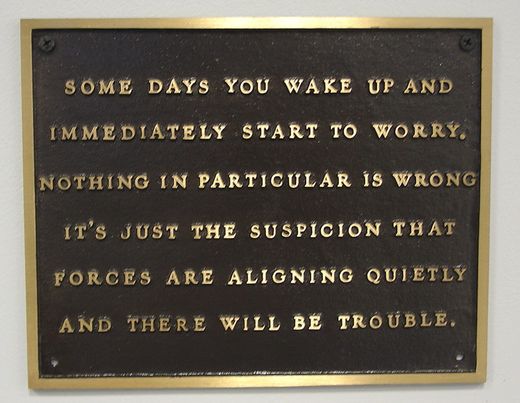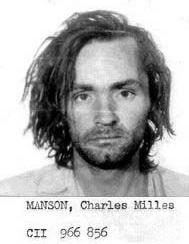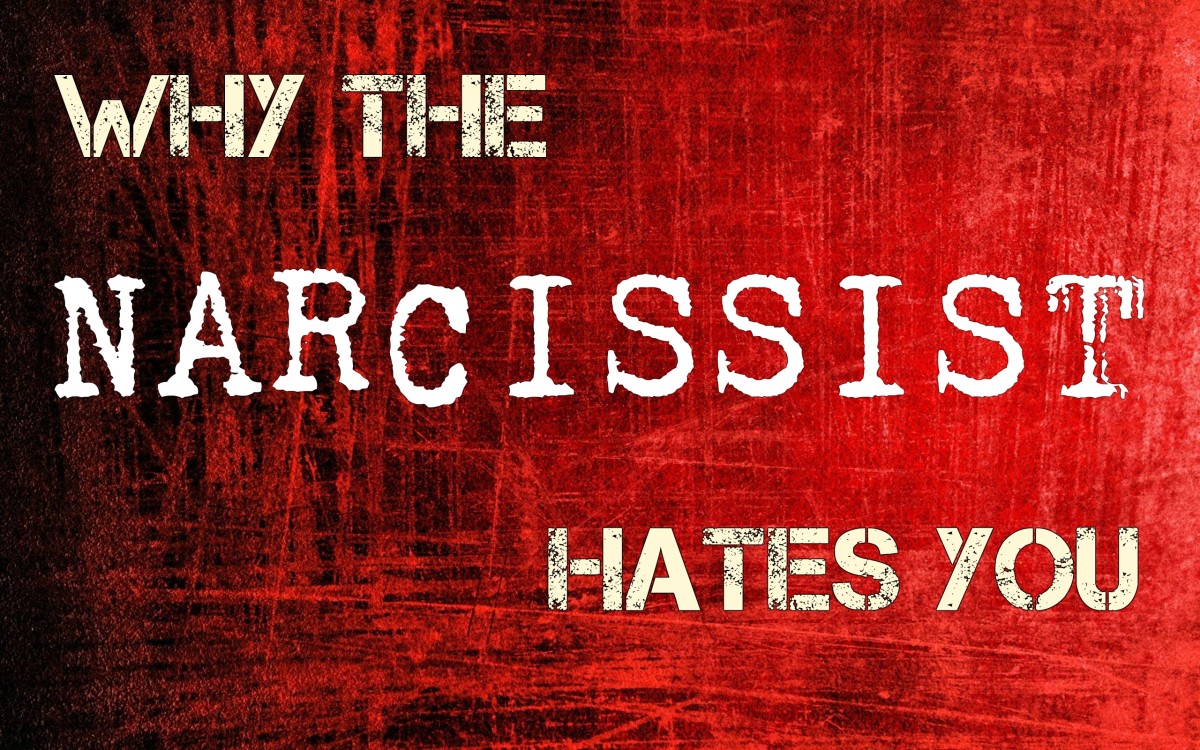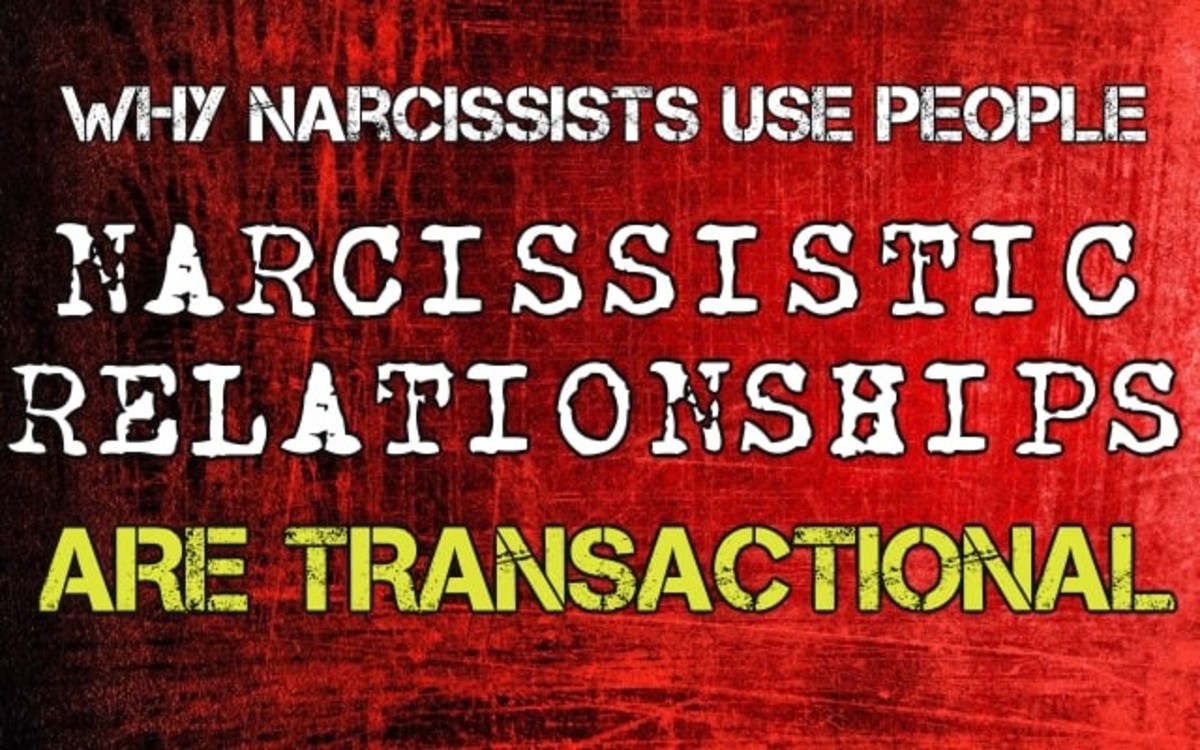Paranoid Schizophrenia
by Kathy Batesel

What is Schizophrenia?
When I worked in the mental health field, I though of schizophrenia as a rare disorder, but in fact, it affects up to one percent of the world's population (0.7% in the U.S.). This means it is more prevalent than Alzheimer's disease or insulin-dependent diabetes, yet it may be more invisible to most of us.
The bad news is that people who suffer from schizophrenia find their lives debilitated by the disease. Their family members, friends, and coworkers usually suffer, too.
The good news is that schizophrenia is highly treatable. Although there is no cure, medical advances have made it possible for many schizophrenics to live productive, happy lives that are on par with their peers. Some experts speculate that within ten years, the disease could be cured with sufficient resources dedicated to research.
Early detection of the illness have a strong impact on how effective treatment may be in any one particular case. Keep reading to learn about how schizophrenia develops, its symptoms, how paranoid schizophrenia is different than other forms of the disease, and which other conditions can mimic it.
Schizophrenia - An Introduction to the Disease
Schizophrenia Subtypes: (Now Eliminated!)
In the past, five subtypes were used to classify types of schizophrenia. These subtypes have been eliminated in the Diagnostic and Statistical Manual V released in 2013.) They were found to be too unreliable and indistinct to be useful. However, the bar was raised for a patient to meet the criteria for schizophrenia in the first place, too.
Paranoid Type: Delusion(s) or hallucination(s) are present, but traits of other types are noticeably lacking.
Disorganized Type: Disorganized speech or behavior, flat or inappropriate affect.
Catatonic Type: Distinguished by major changes in movement, including extreme stillness or "waxy" responsiveness, extreme movements, or repetitive, copied movements or words.
Undifferentiated Type: Includes characteristics of more than one subtype or alternates between subtypes.
Residual Type: Continued presence of some characteristics, but major psychotic symptoms are absent.
Causes of Schizophrenia
Despite a good treatment prognosis, the causes of schizophrenia are still unknown. There appears to be a genetic basis to this illness. It strikes about one percent of the overall population, but is ten times more likely if a parent has been diagnosed with it!
Although scientists believe they have isolated several genes associated with schizophrenia, the results are far from certain. Researchers say that several other genes may also play a role. Further, many people identified as having a genetic predisposition never develop the illness, and there is an extremely high coincidence of childhood abuse among sufferers. Today, most experts feel that schizophrenia occurs as a combination of genetic and environmental factors.
Environmental factors that may contribute to schizophrenia:
- Drug use (particularly psychoactive drugs like marijuana or LSD)
- Childhood abuse
- Childhood neglect / absence of a parent
- Chronic isolation

Schizophrenic Paranoia
Hallucinations, delusions, and disorganized thoughts and behaviors are hallmarks of the schizoid category of illnesses. Before delving into paranoia, it may be helpful to understand more about schizotypal personality disorder and schizoaffective disorder.
Although I'm not a doctor, I personally believe all of these are different manifestations of the same illness. Schizophreniform disorder is identical to schizophrenia, but has a shorter duration and may be a temporary diagnosis. A person who is diagnosed with schizotypal personality displays the same kinds of odd, eccentric behaviors as a schizophrenic person or someone who has schizoaffective disorder, but they have not had a break from reality that pushes them firmly into a diagnosis of full-blown schizophrenia.
Conversely, a person with schizoaffective disorder has odd and eccentric traits combined with traits of a mood disorder. Schizoaffective disorders can be mild or severe. I was called in to evaluate a woman who reported to the emergency room with her husband. She'd been diagnosed with bipolar disorder previously. Acting on voices she'd been hearing, she packed her car and left for a two week trip that took her from Missouri to Florida to Texas and back again. Her husband insisted that she see a doctor right away, and the doctor called me to have her admitted to the psych ward, where a psychiatrist could evaluate whether schizoaffective disorder or bipolar was the more appropriate diagnosis for treatment.
All variants of schizoid disorders tend to start with odd and unusual beliefs. However, not all unusual beliefs indicate mental illness!
If a delusion may be described as a belief that is bizarre and mostly unsupported by evidence, then about a third of America's population might be considered delusional simply because they take on faith that a man who was crucified got reborn and purged their sins! However, this belief does not cause the believer or the people around him or her distress, and therefore isn't considered to be a delusion.
But what if someone believes in witchcraft? Aliens? Slender man?
Whether or not their belief indicates a mental illness depends partly on how much their belief affects their lives and the lives of those around them.
People who experience a break with reality may have beliefs that have a significant impact on their lives in a variety of ways:
- Hallucinations: They may believe they see, hear, or smell things that others can't.
- Delusions: They may believe things that are not true.
As they experience these things, people who interact with them may have strong reactions! They might be called crazy or stupid. They may be treated like they aren't worth listening to, almost like they are less than human. They could be sent into a psychiatric institution where they feel powerless.
A high percentage of them have already experienced a great deal of abuse before their first psychotic break.
We think of paranoia as the patient who says, "They're coming to take me away" or who dons a tinfoil hat. Those who experience it say, "Paranoia is simply complete awareness." Most people who have serious mental illness that harms their ability to function will confess episodes where they feel powerless. Schizophrenics may generalize that feeling and apply it to people who know them inside or outside of a clinical setting, but sometimes they may have had many experiences that justify their feelings of persecution.
Fractured Features of Schizophrenia
Schizophrenia Symptoms
I won't get into the finer points of diagnosis, but in general, a patient may be diagnosed with a schizophrenic illness if he or she exhibits at least two of these symptoms for a significant portion of a month or longer:
1. Delusions
2. Hallucinations
3. Disorganized speech
4. Grossly disorganized or catatonic behavior
5. Negative symptoms (I'll describe these in a moment.)
For a positive diagnosis, at least one of the traits identified must be within the first three items in this list, and while the diagnosis only requires the symptoms be active for most of a month, there are other factors to consider before making a firm diagnosis. For example, a patient who had a break from reality in April for the first time, and sees a psychiatrist on June 5th, may not be diagnosed yet because the criteria also states that there must be at least six months' of duration of the disease's effects or symptoms.
If the patient's symptoms are better described by a mood disorder, drugs, alcohol, or other medical conditions, then a diagnosis of schizophrenia would also be withheld until they were ruled out.
Schizophrenia affects men and women almost equally. It can set in during childhood, and its onset is typically around the ages of 16-30. Onset after age 40 is very rare, though a diagnosis of longtime symptoms may still be made.
What are Negative Symptoms and Positive Symptoms?
Positive symptoms are new, extra behaviors that are added to a patient's personality.
Negative symptoms are behaviors that disappear from a person's personality, so to speak.
Finally, there are cognitive symptoms that affect the patient's brain functioning.
POSITIVE SYMPTOMS
| NEGATIVE SYMPTOMS
| COGNITIVE SYMPTOMS
|
|---|---|---|
Delusions
| Withdrawal from "normal" things/people
| Memory problems
|
Hallucinations
| Flattened responsiveness
| Attention problems
|
Disorganized speech
| Smaller range of emotions
| Easily confused / distracted
|
Disorganized behavior
| Inability to finish tasks
| Going off on tangents as if losing train of thought
|
Clanging*
|
* "Clanging" refers to repeating a sound, syllable, or rhyme. Maxine's language, later in this article, is an example of clanging.

Hallucinations, Delusions, and Meaning
My observations of schizophrenic people is that when their stories seem to be figurative or poetic, it's often a way of expressing something that they cannot put into words, almost like they are thinking in symbols.
I am afraid I haven't had enough exposure to confirm whether this is an accurate statement or not, though, so this section is purely guesswork on my part and should be taken as such.
Many schizoid beliefs involve religious elements or dark symbolism: military attacks, dark places, and monsters or demons. The schizophrenic person may play a role where they either have special power to master the figurative story, or the figurative story reveals them to be controlled by others if they want to gain acceptance. I believe this may relate to abusers from their own pasts. A strong, dominant mother who abuses her son while claiming that his bad behavior "made" her punish him might develop a psychoses in which he has to prove himself worthy. Another person's punitive or absent mother, who was abusive because she wanted him out of her way so she could party, for instance, could result in a fantasy where he becomes like her - appearing in control and powerful.
What Outsiders Notice: Odd and Unusual
Although I have not been directly involved in the treatment of schizophrenia, I have had exposure to a number of people with the disease. Each case was distinctively different, yet one thing was constant: they had an "odd or unusual" appearance in some way - not necessarily related to how they dressed. Consider each of these people (I'm changing names where I've used them):
- My friend's mom was in her late 30s - attractive, well-dressed, and still married to Lisa's dad. Lisa and I were close friends, spending nearly every afternoon together throughout the summer before freshman year. Nonetheless, Lisa never invited me into her house even though she lived exactly one block away. Like most teens, Lisa chafed at her parents, but in this case, she may have had good reason. Her mother, diagnosed with schizophrenia two years earlier, wouldn't allow Lisa to invite anyone over to their home and "freaked out" if anyone stopped by unexpectedly. In fact, I only saw Lisa's mom twice - when she was driving her car - and the draperies in their windows were always closed.
- Audra and her husband were in their early to mid 40s. They sat outside of the East Valley Alcoholism Center (EVAC) where I volunteered. She was about to be released from detox for alcoholism. While the staff completed her paperwork, I struck up a conversation with the couple. Audra confessed that she had been diagnosed with schizophrenia years earlier and described alcoholism as a way she self-medicated. I was shocked! She was neat and clean, married, and friendly, despite her jumpiness. She kept reaching out as if she was snatching a bug from mid-air. I asked her husband if he thought her illness made their marriage more difficult, but he just shrugged and said, "We're married. It's just one of those things."
- We picked Luke up for detox after receiving a call from the police department. He was a true mess! His shoulder-length hair was a tangled knot. Snot crusted his bushy beard. His pants were soiled with pee stains. He smelled terrible! He had to sleep a few hours before I could complete his intake interview. When he finally awakened, I got out my clipboard and started asking questions. He was sober enough to answer, and he described escaping from the Viet Cong, who had trapped him in a tiny room for months. He was about ten years too young to have served in Viet Nam, though, and when I asked him if he was talking about his mother locking him in a closet, he started sobbing and didn't stop for about ten minutes.
- Maxine was also picked up for detox. It wasn't her first time, though she didn't look like a hardened alcoholic by any stretch of imagination. "This is a bunch of schmoo," she said. "Schmoo, poo, go to the loo." She was my own age, young 20s, and could have been my friend, perhaps, except that her childlike, rhyming way of speaking would have made it hard to talk to her for more than a few minutes.
- James wasn't a mess at all. He was a sergeant in the U.S. Army who briefly dated my barracks roommate. He was referred to the mental health clinic where I worked by his commander, who saw a sharp, sudden decline in James' performance. I'll never know if his commander heard the same stories from James that I'd heard him tell my roommate, but his version involved him conducting daring rescues while seized by helicopter fire - at Pearl Harbor! When I'd heard him tell his story a few weeks earlier, I noticed his frenzied eyes and rigid posture. As he finished his tale, he returned to looking like any regular soldier. Pointing out that Pearl Harbor hadn't seen helicopter fire since twenty years before he was born guaranteed a swift argument and ushered the crazed look back into his body language.
Except for Luke and Maxine, all of these people were formally diagnosed with schizophrenia by qualified professionals after undergoing a thorough evaluation. Luke and Maxine were thought to be "probable" cases by the counselor who worked at the detox facility, but his role at the center didn't include diagnosing or treating mental ailments, so he didn't do a formal evaluation.

Schizophrenics May Hide Symptoms
Schizophrenic people may learn that their symptoms are unusual at an early age and try to hide them. Those who are in treatment often struggle between a "forced" reality and their own reality. The one they see, hear, and experience firsthand is every bit as real to them as a "normal" person's experiences.
When an individual is hearing or seeing things that are not there, they may realize that others don't see what they do. They may have learned from experiences not to reveal their experiences because they will be shamed or told to stop... which is something they have no control over.
Imagine it for yourself. Would you deny seeing the color blue if you knew you'd get shamed or punished if you ever looked at blue again?
Does Schizophrenia Fuel Creativity?

Famous People with Schizophrenia
Although schizophrenia can strike during childhood, it may not be identified until adulthood, as we see with John Nash, the famous mathematician featured in the video above and in the movie "A Beautiful Mind."
Brian Wilson of the Beach Boys says he started having auditory hallucinations when he was about 23 years old. He was diagnosed initially as a paranoid schizophrenic, but the diagnosis was later retracted. He is now said to have schizoaffective disorder. Wilson's hallucinations started after using psychedelic drugs. Ironically, during these years he and brother Dennis met Charles Manson, allowing Manson and as many as seventeen women move into his California home for several months. One of Manson's own songs later appeared on a Beach Boys album.
Dennis Wilson's Ex Wife Describes the Wilson-Manson Connection
Creativity seems to be abundant among those diagnosed with schizophrenia, whether they are seeing new forms of mathematics, writing music, or painting. There are very few famous people whose success appeared to be partially due to schizophrenic disorders, but they do exist.
One of Fleetwood Mac's founding members, Peter Green, turned into a recluse while coping with his illness, but continued playing public performances later.
Studio musician Jim Gordon wasn't so fortunate. Though he played for many superstars like Eric Clapton, George Harrison, and Alice Cooper, his undiagnosed paranoid schizophrenia likely played a role in his decision to kill his own mother.
Law professor Elyn Saks suffers from schizophrenia yet has gone on to not only have a successful career, but to study and write about this illness. Saks has identified that high-functioning schizophrenics may work around their hallucinations by challenging them directly, using sensory inputs like white noise, and avoiding triggers.
Dos and Don'ts
1. Do not belittle the schizophrenic's beliefs. Ridicule doesn't help, and may worsen the problem.
2. Encourage the schizophrenic to communicate what they're seeing, hearing, and experiencing. Respond with careful listening and reflect on the feelings they may be having.
3. Be alert for signs of suicidal thoughts.
4. Obtain professional help.
Schizophrenia Treatment
Psychotropic medications are allowing schizophrenics greater freedom and so-called normalcy than ever before. Unfortunately, patients may face a dilemma. If they can be treated from the very first time they break from reality, they are likely to lead productive lives.
However, the nature of the illness may cause them to doubt the diagnosis and feel suspicious about the medical care they receive, particularly if they're having paranoid ideations. Refusing treatment or stopping it suddenly can allow the disease to return, but few people want to commit to a lifetime of psychotropic drugs because of one single, bizarre incident.
The longer they wait, however, the more difficult treatment becomes. This illness does real damage to brain cells as the patient's gray matter deteriorates and synapses stop working properly.
There are a few doctors and patients who claim that vitamin B3, niacin, can interrupt the disease, but the data is controversial and not well studied despite having taken place decades ago.
Please visit Schizophrenia.com for in depth studies and a list of worldwide treatment centers.






